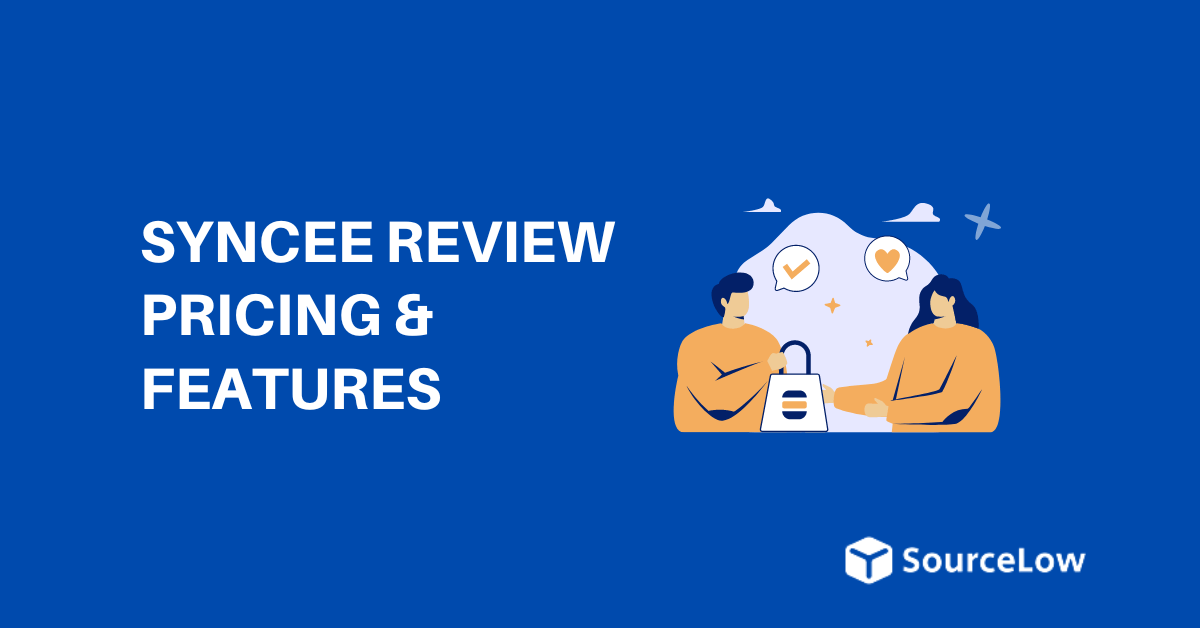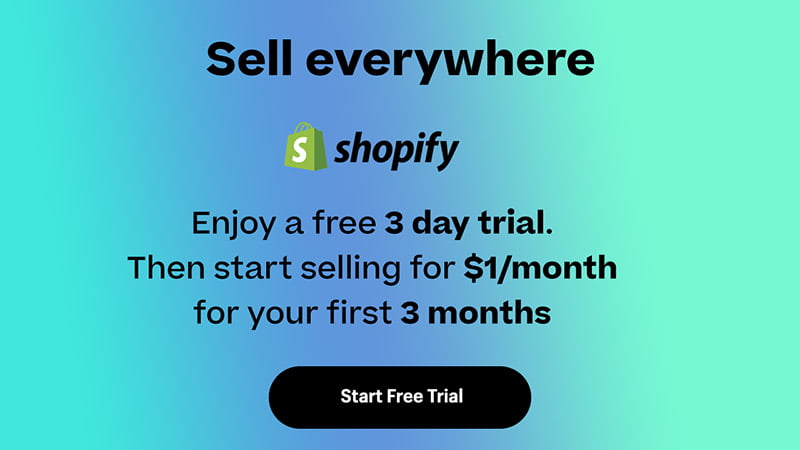Disclosure: We may earn a commission or fee from some of the links in our content. However, this does not affect our recommendations. Learn more.
Syncee is an all-in-one dropshipping and product sourcing platform that connects store owners with global suppliers, offering features like automated product uploads, real-time inventory syncing, and access to thousands of dropshipping and print on demand products.
After spending several weeks testing Syncee on a Shopify store, I’m ready to give you the full picture.
I’ll walk through everything from its setup process to pricing, features, and whether it’s actually worth using if you’re running a dropshipping or print on demand store.
Why You Can Trust This Review
I’ve tested and reviewed dozens of dropshipping tools over the past ten years. For this review, I spent over 20 hours using Syncee on both a dropshipping and print on demand setup.
That includes everything from importing products to syncing with Shopify, testing support, and evaluating how well Syncee stacks up against tools like DSers, Spocket, and Printify.
All findings below are based on hands-on experience — no fluff, no guesswork.
Syncee Pros and Cons
Syncee
Best for supplier variety and automation
Rated: 4.4 / 5
Great for: Shopify store owners, print on demand, international shipping
Free plan available
Paid plans: $29 to $99 per month
Pros
- Easy-to-use with Shopify and other ecommerce platforms
- Wide range of suppliers from the US, UK, EU, and more
- Allows importing external data feeds (CSV, XML, XLSX)
- Print on demand options built-in
- Real-time inventory and pricing updates
Cons
- Supplier quality can vary
- Longer shipping times with some vendors
- Limited branding/custom packaging options
- User interface isn’t as intuitive as competitors like Spocket
What Is Syncee?
Syncee is a product sourcing and automation tool for ecommerce stores.
It’s not a supplier itself — it acts as a bridge between your store and verified suppliers around the world.
You can find, import, and sync thousands of products directly into your store, and when an order is placed, the supplier fulfills it on your behalf.
What makes Syncee stand out is that it supports both general dropshipping and print on demand.
It also allows you to upload your own supplier data feeds if you’re working with a private manufacturer or wholesaler.
Platforms Syncee Supports:
- Shopify
- Wix
- BigCommerce
- Squarespace
- Ecwid
- Jumpseller
- Shoprenter
My Experience With Syncee

Signing up with Syncee was straightforward.
I connected a Shopify store in just a few clicks.
From there, I explored the Syncee Marketplace to find relevant suppliers. The filters were surprisingly useful — I could sort by shipping country, delivery time, pricing, and even supplier ratings.
I tested Syncee using both a dropshipping catalog and print on demand store.
Here’s what I found:
Dropshipping Setup
- Found reliable suppliers in the US and Europe
- Products were uploaded instantly to my store
- Inventory synced every 24 hours by default (can be upgraded to hourly)
Print on Demand Setup
- Added basic apparel, mugs, and wall art from print suppliers
- Mockups and descriptions were automatically pulled in
- Pricing rules were easy to apply (set a global 40% markup)
What surprised me most was how well it handled inventory automation. I didn’t have to manually check stock or update listings — Syncee handled that for me daily.
Syncee Features Overview
1. Syncee Marketplace
The Marketplace is where you browse thousands of products from vetted suppliers.
Highlights:
- Over 12,000 suppliers
- Filters for shipping location, currency, delivery times, price
- Includes both physical products and POD items
- Option to contact suppliers directly for special terms
If you’re focused on fast shipping, the filtering system helps you identify suppliers who can deliver within the US or UK within 3–7 days.
2. Print on Demand Integration
While Syncee isn’t a dedicated POD platform, it supports several print suppliers and automatically pulls in:
- Customizable product variants
- Mockups and product details
- Real-time syncing for stock and price
You can’t design items directly in Syncee, but you can import already-created designs from POD suppliers.
It’s best used in conjunction with platforms like Printful or Gooten if you’re a serious POD brand.
3. Product Feed Manager
If you already work with a wholesaler or niche supplier, Syncee lets you upload their product feed manually using:
- CSV
- XML
- XLSX
- JSON
You can map fields (e.g., title, SKU, price) to match your store structure.
This feature is a huge bonus if you work with custom suppliers or private manufacturers.
4. Auto-Syncing
Syncee syncs:
- Inventory levels
- Product pricing
- Titles and descriptions
Depending on your plan, syncing occurs either every 24 hours or every hour. This reduces the risk of overselling and helps keep your listings accurate.
5. Pricing Rules
You can set global pricing markups or category-specific rules. For example:
- Add a 30% margin to all accessories
- Add $10 flat fee to home decor
- Round prices to $X.99
These settings save a lot of manual editing — especially with large catalogs.
Syncee Pricing
Here’s a breakdown of Syncee’s current pricing plans (as of 2025):
| Plan | Monthly Price | Product Limit | Key Features |
|---|---|---|---|
| Starter | Free | 25 products | Basic marketplace access, no auto-sync |
| Basic | $29/month | 100 products | Daily sync, filter suppliers, pricing rules |
| Pro | $49/month | 500 products | Feed uploads, hourly syncing |
| Business | $99/month | 10,000+ | Full automation, premium support |
The Pro plan is ideal if you’re scaling or using multiple suppliers.
Smaller stores can get by with Basic, especially if you’re still building your catalog and only need access to core features.
One thing to note: the Starter plan is mostly useful for testing the dashboard and browsing suppliers.
You’ll likely need to upgrade to unlock real functionality like syncing, feed imports, or working with your own suppliers.
If automation and catalog size matter to your store, you’ll need to jump to Pro or Business sooner than later.
How Syncee Compares to Competitors
Syncee vs Spocket
| Feature | Syncee | Spocket |
|---|---|---|
| Supplier Count | 12,000+ | 1,000+ |
| POD Support | Yes | Limited |
| External Feed Upload | Yes | No |
| Price | From $0 | From $39 |
| Sync Frequency | Daily/hourly | Daily only |
Spocket is more polished, but Syncee offers greater supplier variety and custom data feed options.
Where Spocket shines is user experience — the interface is cleaner, and it’s a bit easier to navigate for beginners.
But if you value flexibility, custom feeds, and access to a much wider range of suppliers (including more obscure niches), Syncee gives you more room to grow.
It’s a better fit for sellers wanting to move beyond basic catalog setups.
Syncee vs DSers
| Feature | Syncee | DSers |
|---|---|---|
| Main Focus | Wholesale dropshipping | AliExpress dropshipping |
| POD Support | Yes | No |
| Supplier Quality | Verified, global | Mostly AliExpress |
| Integrations | Shopify, Wix, others | Shopify only |
DSers is better for AliExpress-style products. Syncee works better if you want real suppliers in the US or EU.
The biggest difference comes down to the supply chain model.
DSers focuses almost entirely on AliExpress, meaning you’re often dealing with slower shipping, inconsistent product quality, and communication barriers.
Syncee gives you access to verified B2B suppliers, so it’s a stronger option for store owners wanting long-term relationships with manufacturers and more reliable fulfillment.
Is Syncee Good Value for Money?
Yes — if you’re looking for a flexible platform that works for both dropshipping and print on demand, Syncee offers a solid value.
Compared to Spocket or Modalyst, you’ll pay less for similar functionality. The free plan also lets you test before committing.
That said, many suppliers require manual order placement on the Syncee Supplier Platform unless they support full automation, so be sure to check this in advance.
Keep in mind, though, that costs can add up as your product count grows. If you’re managing thousands of SKUs or syncing hourly, the Business plan becomes a necessity.
Selling POD With Syncee: What You Need to Know
While not a replacement for Printify or Printful, Syncee can help you source and sell print on demand products, particularly if you’re looking for more variety or niche suppliers.
POD Use Case Breakdown:
| Area | Syncee |
|---|---|
| Design Tools | No built-in tools |
| Supplier Options | Yes (some print suppliers) |
| Product Imports | Fast and automated |
| Mockups | Included from supplier |
| Brand Control | Limited unless supplier allows white label |
Syncee is a good addition to your POD stack — especially if you want to supplement with ready-to-ship items like jewelry, accessories, or homeware.
That said, if you’re focused heavily on product customization, branded packaging, or niche-specific control (like embroidery settings or custom labels), dedicated POD platforms still offer deeper functionality.
Syncee is better suited as a product aggregator — a way to extend your catalog, not necessarily build your POD brand from scratch.
Final Verdict: Should You Use Syncee?
Yes — Syncee is worth considering if you run a store on Shopify, Wix, or another supported platform and want to streamline your product sourcing.
It offers powerful automation, solid supplier variety, and support for both standard dropshipping and print on demand.
It’s not the most beginner-friendly tool and you may need to vet suppliers manually, but overall, Syncee gives you more flexibility than most competing platforms.
Recommended for:
- Store owners using Shopify or Wix
- Brands wanting verified suppliers in the US, UK, or EU
- POD stores looking to expand into non-print items
- Businesses working with custom or private suppliers
Not ideal if you’re brand new to ecommerce or want full control over packaging and fulfillment.
Want to Try Syncee?
You can start with Syncee’s free plan to test the platform before committing.
If you’re already selling with Shopify or print on demand tools, it’s a solid way to expand your catalog and automate tedious backend tasks.


